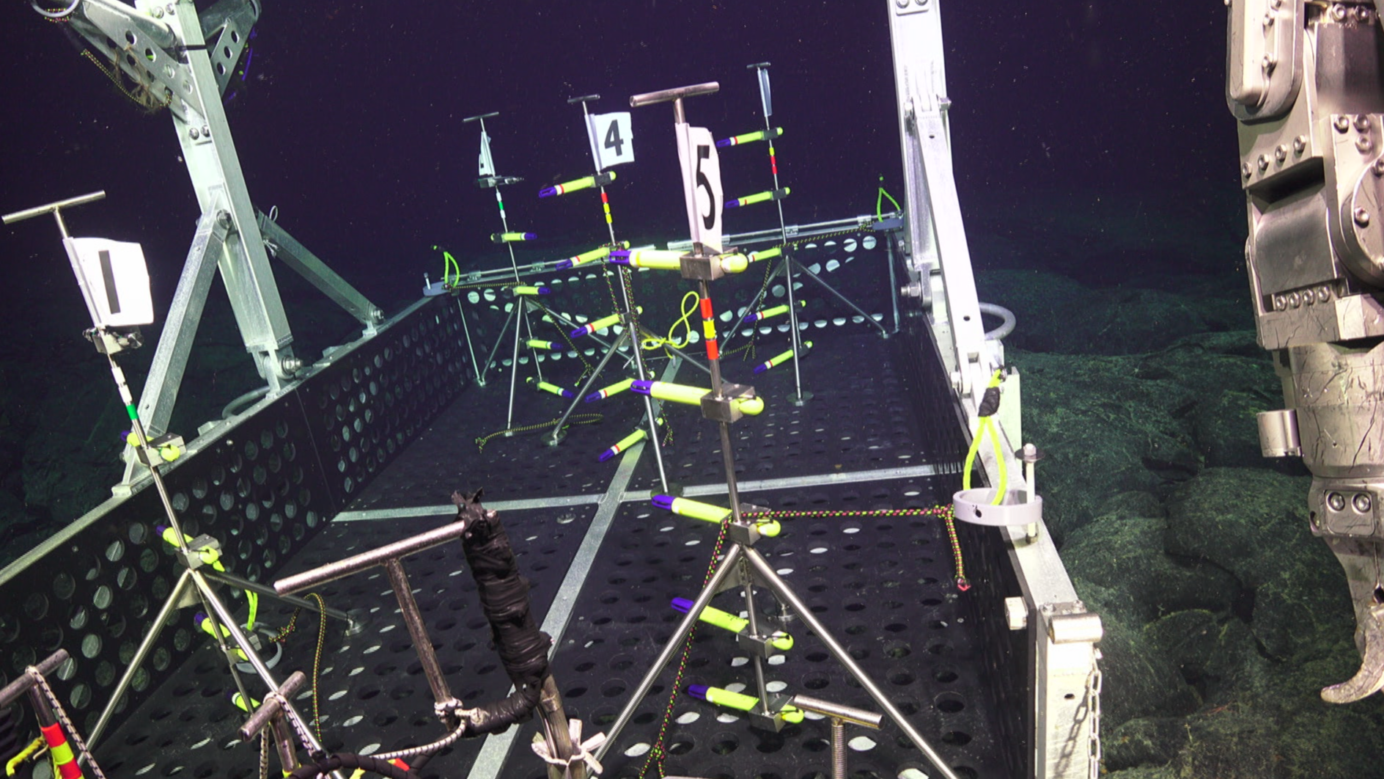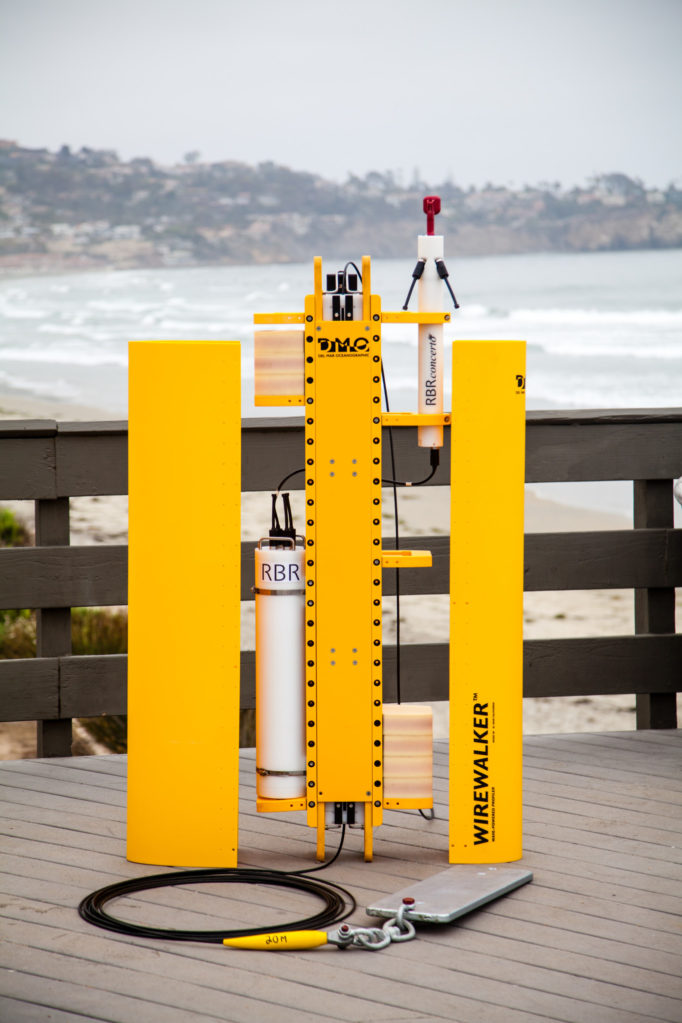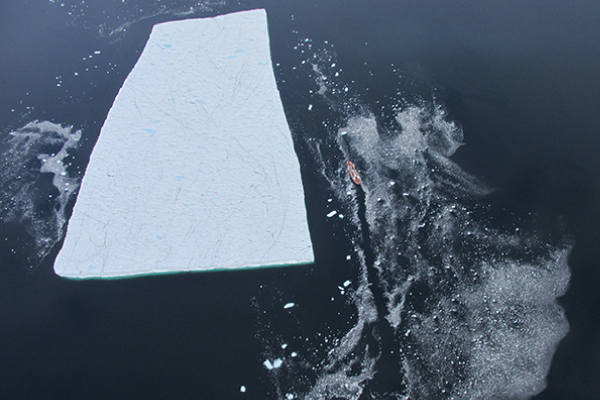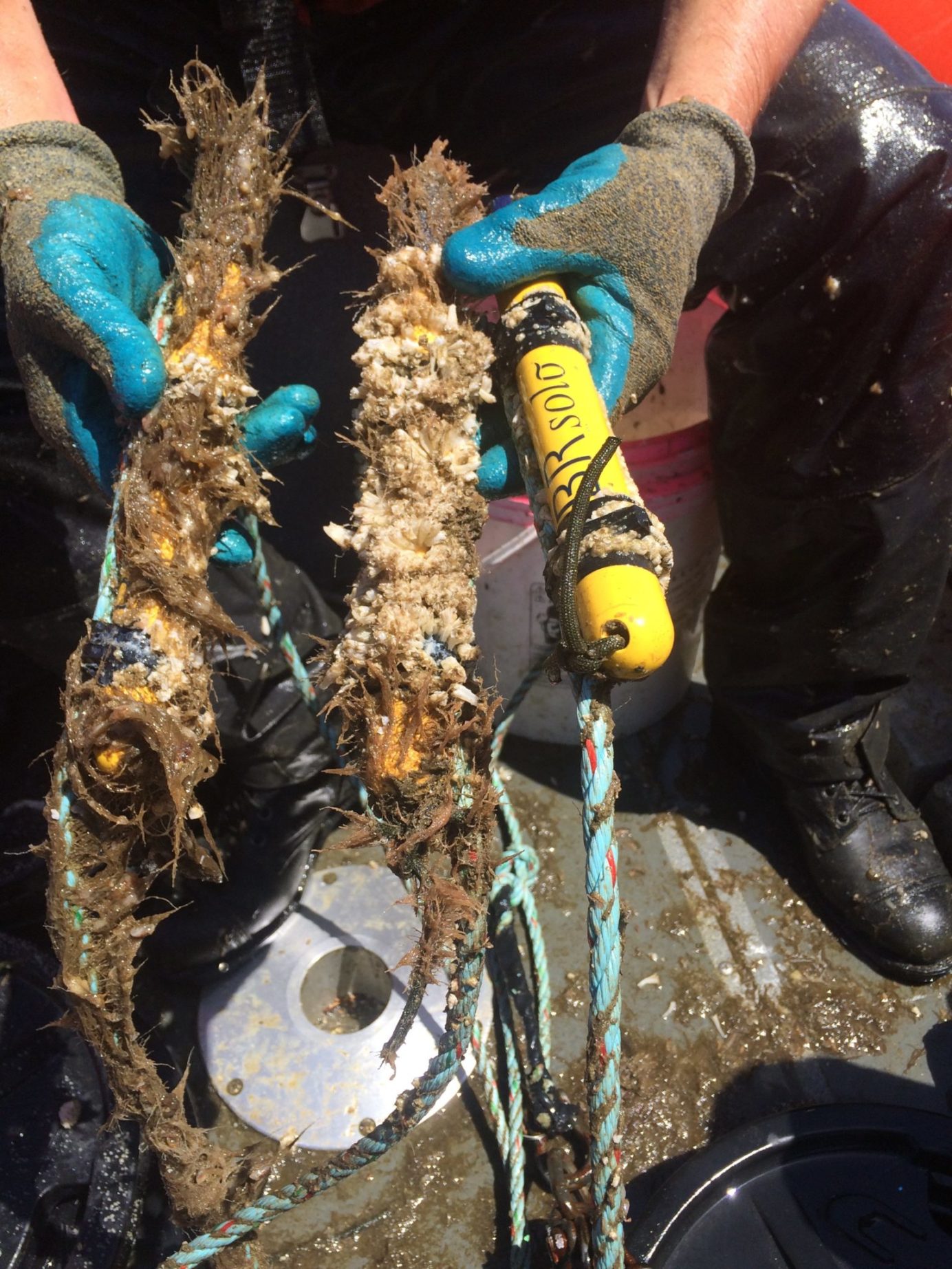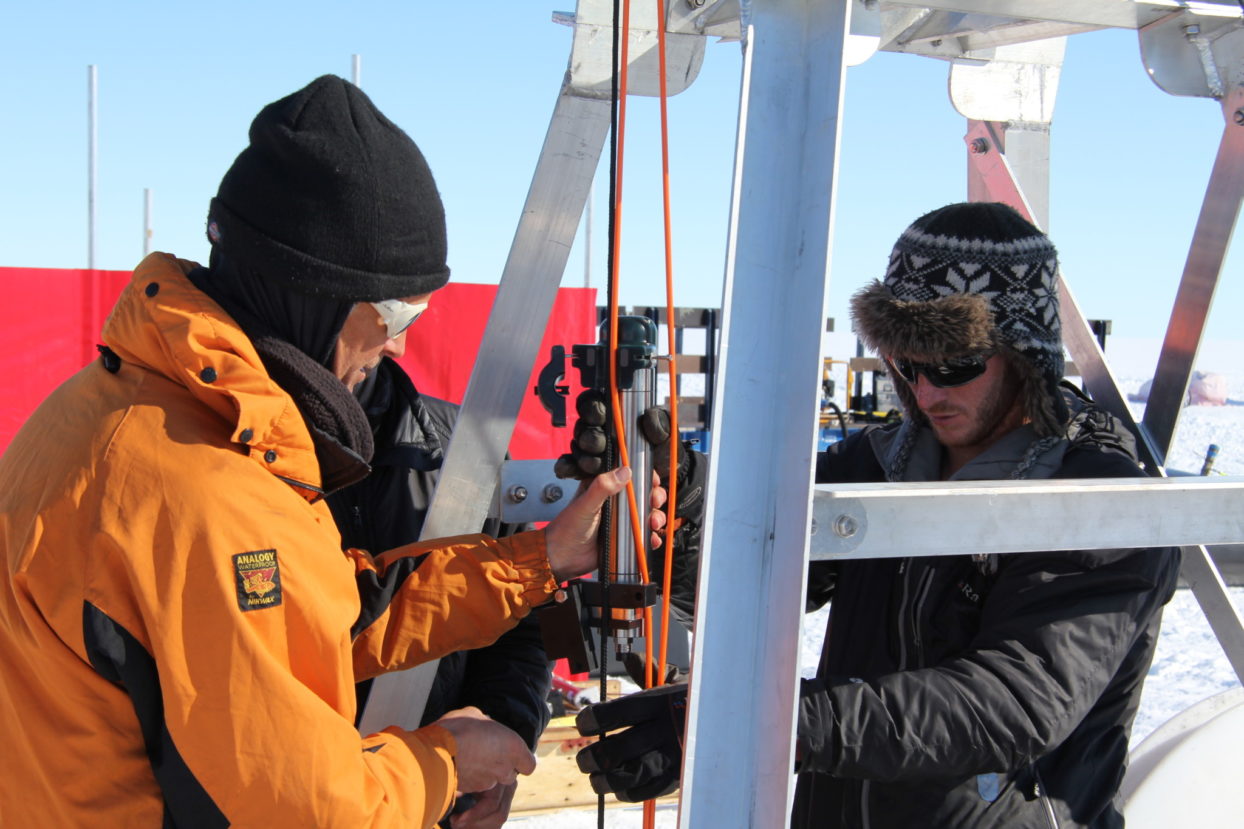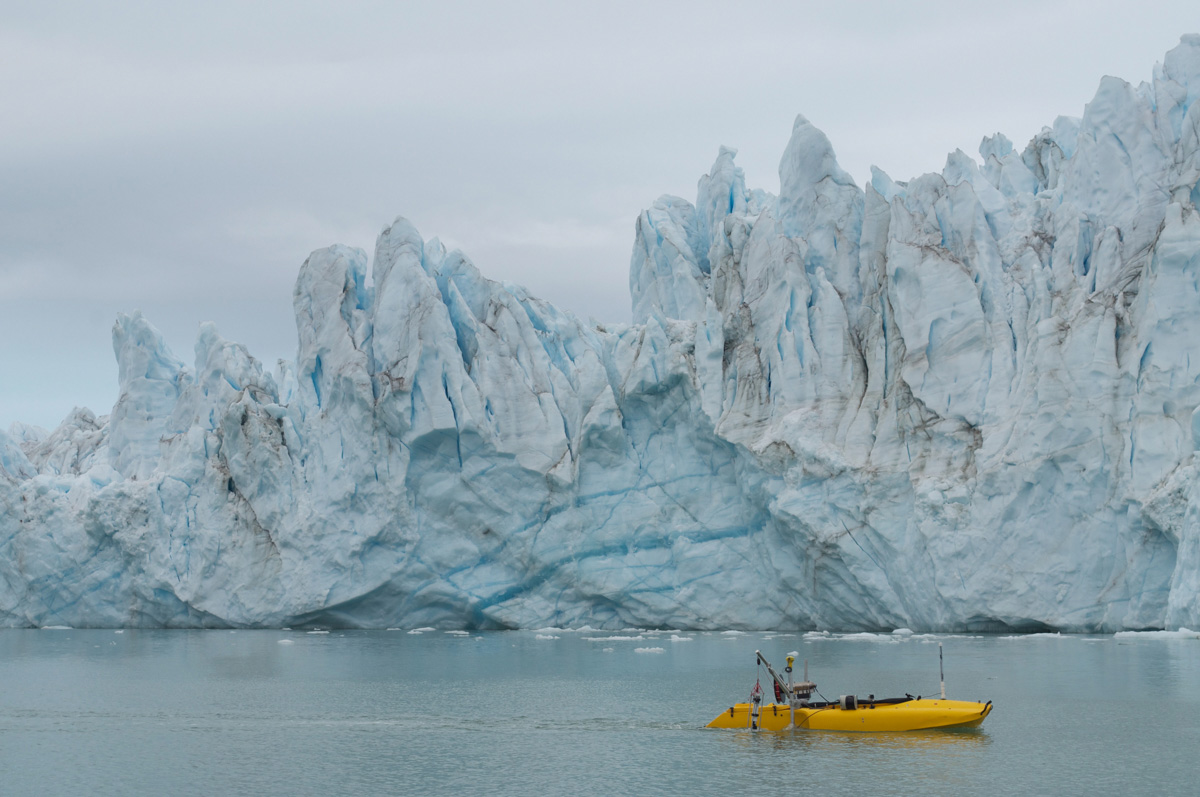In July 2018, a team of researchers and engineers from Rutgers University and the University of Washington Applied Physics Laboratory deployed the Cabled Observatory Vent Imaging Sonar (COVIS) to the NSF-funded Ocean Observatories Initiative Cabled Array. COVIS, a multibeam acoustic sensor, is installed at 1600m depth at the ASHES hydrothermal vent field within the Caldera of Axial Seamount, an active … Read More about Instrumenting a Hydrothermal Vent
It Walks the Line: a Wirewalker™ record deployment
In September of 2016, a surface wave-powered Wirewalker™ descended to the bottom of its 100-m wire, reversed direction, and smoothly ascended to the surface. Onboard, a payload of instruments took detailed measurements of physical and biological properties in Southern California’s La Jolla submarine canyon. It was the first cycle the Wirewalker would complete at the La Jolla canyon mooring – … Read More about It Walks the Line: a Wirewalker™ record deployment
Ice Shelves, Ice Islands and Measuring Change in the High Arctic
In Canada’s High Arctic, within the fiords of Ellesmere Island, there are lakes that float upon the Arctic Ocean. Called epishelf lakes, they are glacially-fed bodies of freshwater that sit atop a steep halocline. The lakes exist only where the ice shelves, filling the mouths of the fiords, act as dams, holding the water from flowing into the ocean. In … Read More about Ice Shelves, Ice Islands and Measuring Change in the High Arctic
Go Big or Go Home: Instrumenting the Nearshore
Leaning over the side of the 22-foot boat and pulling up the first line of temperature sensors, oceanographer Jamie MacMahan described the state of the line as the worst bio-fouling he had ever seen. It was slimy and smelly. One down, 34 more to go. This was only a pilot project, but MacMahan’s mantra of ‘Go big or go home’ … Read More about Go Big or Go Home: Instrumenting the Nearshore
BAS begins monitoring waters under largest ice shelf in Antarctica
Drilling ice deeper than most of the world’s freestanding structures: Dr. Makinson discusses deploying instruments in Antarctica.
High risk, high potential: Conducting research near Greenland’s outlet glaciers
Sometimes high potential comes with high risk. Dr. Clark Richards sees the potential and uses an innovative solution to research how ocean dynamics are destabilizing Greenland’s glaciers.
